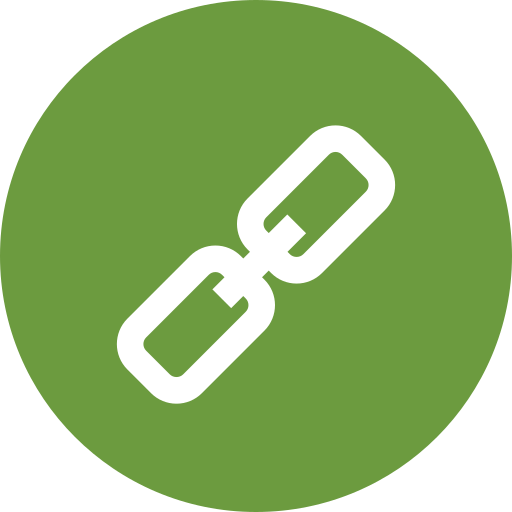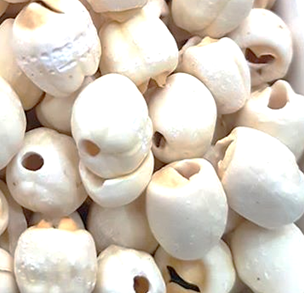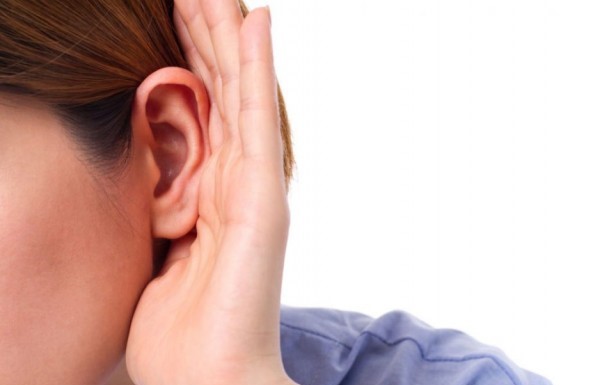| Package | Per pill | Total price | Save | Order |
|---|---|---|---|---|
| 250mg × 30 Pills | $1.45 | $43.62 + Bonus - 4 Pills | - | Add to cart |
| 250mg × 60 Pills | $1.14 | $68.21 + Bonus - 4 Pills | $18.60 | Add to cart |
| 250mg × 90 Pills | $1.03 | $92.79 + Bonus - 7 Pills | $37.80 | Add to cart |
| 250mg × 120 Pills | $0.98 | $117.38 + Bonus - 7 Pills | $56.40 | Add to cart |
| 250mg × 180 Pills | $0.93 | $166.55 + Bonus - 11 Pills | $93.60 | Add to cart |
| 250mg × 270 Pills | $0.89 | $240.31 + Bonus - 11 Pills Free Trackable Delivery | $151.20 | Add to cart |
| 250mg × 360 Pills | $0.87 | $314.06 + Bonus - 11 Pills Free Trackable Delivery | $208.80 | Add to cart |
Griseofulvin 250 mg is an antifungal medication used to treat various types of fungal infections, including ringworm, athlete's foot, and jock itch. It belongs to the class of medications known as antifungals and works by stopping the growth of fungi. In this article, we will provide a detailed overview of Griseofulvin 250 mg, including its uses, benefits, and potential side effects.
What is Griseofulvin 250 mg?
Griseofulvin 250 mg is a prescription medication that contains the active ingredient Griseofulvin. It is available in various forms, including tablets, capsules, and oral suspensions. The medication is used to treat fungal infections of the skin, hair, and nails, and is typically taken orally.
Uses of Griseofulvin 250 mg
Griseofulvin 250 mg is used to treat a variety of fungal infections, including:
- Ringworm (tinea corporis)
- Athlete's foot (tinea pedis)
- Jock itch (tinea cruris)
- Fungal infections of the scalp (tinea capitis)
- Fungal infections of the nails (onychomycosis)
Benefits of Griseofulvin 250 mg
Griseofulvin 250 mg has several benefits, including:
- Effective treatment of fungal infections: Griseofulvin 250 mg is highly effective in treating fungal infections, including those that are resistant to other treatments.
- Easy to use: The medication is available in various forms, making it easy to use and convenient to take.
- Affordable: Griseofulvin 250 mg is generally affordable and can be purchased at a lower cost than other antifungal medications.
Potential Side Effects of Griseofulvin 250 mg
While Griseofulvin 250 mg is generally well-tolerated, it can cause some side effects, including:
- Headache
- Dizziness
- Nausea and vomiting
- Diarrhea
- Abdominal pain
- Fatigue
Table 1: Common Side Effects of Griseofulvin 250 mg
| Side Effect | Frequency |
|---|---|
| Headache | 10% |
| Dizziness | 8% |
| Nausea and vomiting | 6% |
| Diarrhea | 5% |
| Abdominal pain | 4% |
| Fatigue | 3% |
How to Order Griseofulvin 250 mg
Griseofulvin 250 mg can be ordered online or through a pharmacy. To order Griseofulvin 250 mg online, follow these steps:
- Order Griseofulvin 250 mg without prescription: You can order Griseofulvin 250 mg without a prescription from online pharmacies.
- Buy Griseofulvin 250 mg: You can buy Griseofulvin 250 mg from online pharmacies or through a prescription from your doctor.
- Purchase 250mg Griseofulvin with Visa: You can purchase Griseofulvin 250 mg with a Visa credit card from online pharmacies.
- Order cheap Griseofulvin line: You can order cheap Griseofulvin 250 mg from online pharmacies that offer discounts and promotions.
Table 2: Online Pharmacies that Sell Griseofulvin 250 mg
| Pharmacy | Price |
|---|---|
| Pharmacy 1 | $10.99 |
| Pharmacy 2 | $12.99 |
| Pharmacy 3 | $15.99 |
Lists of Benefits and Drawbacks
Here are some benefits and drawbacks of using Griseofulvin 250 mg:
Benefits:
- Effective treatment of fungal infections
- Easy to use
- Affordable
- Available in various forms
- Can be ordered online or through a pharmacy
Drawbacks:
- Can cause side effects such as headache, dizziness, and nausea
- May not be suitable for people with certain medical conditions
- May interact with other medications
- Requires a prescription from a doctor
Ordering Options
Here are some ordering options for Griseofulvin 250 mg:
- Order Griseofulvin 250 mg with Amex: You can order Griseofulvin 250 mg with an American Express credit card from online pharmacies.
- Order generic Griseofulvin online: You can order generic Griseofulvin 250 mg online from pharmacies that offer generic versions of the medication.
- Purchase discount Griseofulvin 250 mg buy online: You can purchase discount Griseofulvin 250 mg from online pharmacies that offer discounts and promotions.
- Buy Griseofulvin 250 mg free shipping: You can buy Griseofulvin 250 mg with free shipping from online pharmacies that offer free shipping on orders over a certain amount.
Conclusion
Griseofulvin 250 mg is an effective treatment for fungal infections, including ringworm, athlete's foot, and jock itch. It is available in various forms and can be ordered online or through a pharmacy. While it can cause some side effects, it is generally well-tolerated and affordable. If you are suffering from a fungal infection, talk to your doctor about ordering Griseofulvin 250 mg. You can also order Griseofulvin 250 mg online from pharmacies that offer discounts and promotions. Remember to always follow the instructions of your doctor and the medication label to ensure safe and effective use of Griseofulvin 250 mg.
Recommendations
If you are looking to order Griseofulvin 250 mg, we recommend the following:
- Order Griseofulvin 250 mg without prescription: If you are looking for a convenient and affordable way to order Griseofulvin 250 mg, consider ordering it online without a prescription.
- Buy Griseofulvin 250 mg with Visa: If you are looking for a secure and convenient way to pay for Griseofulvin 250 mg, consider using a Visa credit card.
- Purchase discount Griseofulvin 250 mg buy online: If you are looking for a way to save money on Griseofulvin 250 mg, consider purchasing it from online pharmacies that offer discounts and promotions.
By following these recommendations, you can safely and effectively order Griseofulvin 250 mg and treat your fungal infection.
Fungal Infections of the Skin and Nails: A Comprehensive Overview
Fungal infections are a common problem that affects millions of people worldwide. They can occur on various parts of the body, including the skin and nails. In this article, we will discuss some of the most common fungal infections that affect the skin and nails, including favus, trichophytosis, microsporia of the pilar part of the head, microsporia of smooth skin, dermatomycosis of beard and moustaches, epidermophitia of smooth skin, inguinal epidermophitia, and onychomycoses.
Introduction to Fungal Infections
Fungal infections are caused by fungi, which are microscopic organisms that thrive in warm, moist environments. They can be contagious and spread from person to person through direct contact or by sharing personal items. Fungal infections can also be caused by an overgrowth of fungi that are normally present on the skin.
Types of Fungal Infections
There are several types of fungal infections that affect the skin and nails. Some of the most common types include:
- Favus: Also known as tinea favosa, favus is a chronic fungal infection of the scalp that is caused by the fungus Trichophyton schoenleinii. It is characterized by the formation of yellowish crusts and mats on the scalp, which can lead to hair loss.
- Trichophytosis: Trichophytosis is a fungal infection of the skin that is caused by the fungus Trichophyton. It can affect various parts of the body, including the face, neck, and limbs.
- Microsporia of the Pilar Part of the Head: Microsporia is a fungal infection of the scalp that is caused by the fungus Microsporum. It is characterized by the formation of small, circular patches on the scalp, which can lead to hair loss.
- Microsporia of Smooth Skin: Microsporia can also affect smooth skin, such as the face, neck, and limbs. It is characterized by the formation of small, circular patches on the skin, which can be itchy and inflamed.
- Dermatomycosis of Beard and Moustaches: Dermatomycosis is a fungal infection of the beard and moustaches that is caused by the fungus Trichophyton. It is characterized by the formation of small, circular patches on the skin, which can be itchy and inflamed.
- Epidermophitia of Smooth Skin: Epidermophitia is a fungal infection of smooth skin that is caused by the fungus Epidermophyton. It is characterized by the formation of small, circular patches on the skin, which can be itchy and inflamed.
- Inguinal Epidermophitia: Inguinal epidermophitia is a fungal infection of the groin area that is caused by the fungus Epidermophyton. It is characterized by the formation of small, circular patches on the skin, which can be itchy and inflamed.
- Onychomycoses: Onychomycoses is a fungal infection of the nails that is caused by various types of fungi, including Trichophyton, Epidermophyton, and Candida. It is characterized by the thickening and discoloration of the nails, which can be painful and unsightly.
Causes and Risk Factors
Fungal infections are caused by an overgrowth of fungi that are normally present on the skin. They can also be caused by an infection with a new type of fungus. Some of the common causes and risk factors for fungal infections include:
- Poor Hygiene: Poor hygiene can contribute to the development of fungal infections. Fungi thrive in warm, moist environments, and poor hygiene can create an ideal environment for them to grow.
- Weakened Immune System: A weakened immune system can make a person more susceptible to fungal infections. People with chronic illnesses, such as diabetes, or those taking immunosuppressive medications are more likely to develop fungal infections.
- Direct Contact: Direct contact with an infected person or contaminated object can spread fungal infections.
- Sharing Personal Items: Sharing personal items, such as towels, combs, or hairbrushes, can spread fungal infections.
Symptoms and Diagnosis
The symptoms of fungal infections can vary depending on the type of infection and the affected area. Some common symptoms include:
- Itching and Inflammation: Fungal infections can cause itching and inflammation of the affected area.
- Redness and Swelling: Fungal infections can cause redness and swelling of the affected area.
- Crusting and Scaling: Fungal infections can cause crusting and scaling of the affected area.
- Hair Loss: Fungal infections of the scalp can cause hair loss.
Diagnosing fungal infections can be challenging, as the symptoms can be similar to those of other skin conditions. A diagnosis is typically made based on a combination of the following:
- Physical Examination: A physical examination of the affected area can help diagnose fungal infections.
- Laboratory Tests: Laboratory tests, such as skin scrapings or nail clippings, can help diagnose fungal infections.
- Fungal Culture: A fungal culture can help identify the type of fungus causing the infection.
Treatment and Prevention
Treatment for fungal infections depends on the type of infection and the affected area. Some common treatments include:
- Topical Antifungal Medications: Topical antifungal medications, such as creams or ointments, can be used to treat fungal infections of the skin.
- Oral Antifungal Medications: Oral antifungal medications, such as tablets or capsules, can be used to treat fungal infections of the skin and nails.
- Laser Therapy: Laser therapy can be used to treat fungal infections of the nails.
Preventing fungal infections can be challenging, but there are several steps that can be taken to reduce the risk of developing an infection. Some common prevention strategies include:
- Practicing Good Hygiene: Practicing good hygiene, such as washing the skin and hair regularly, can help prevent fungal infections.
- Avoiding Direct Contact: Avoiding direct contact with an infected person or contaminated object can help prevent fungal infections.
- Not Sharing Personal Items: Not sharing personal items, such as towels, combs, or hairbrushes, can help prevent fungal infections.
Table: Common Fungal Infections
| Fungal Infection | Cause | Symptoms | Treatment |
|---|---|---|---|
| Favus | Trichophyton schoenleinii | Yellowish crusts and mats on the scalp, hair loss | Topical antifungal medications, oral antifungal medications |
| Trichophytosis | Trichophyton | Itching and inflammation of the skin, redness and swelling | Topical antifungal medications, oral antifungal medications |
| Microsporia of the Pilar Part of the Head | Microsporum | Small, circular patches on the scalp, hair loss | Topical antifungal medications, oral antifungal medications |
| Microsporia of Smooth Skin | Microsporum | Small, circular patches on the skin, itching and inflammation | Topical antifungal medications, oral antifungal medications |
| Dermatomycosis of Beard and Moustaches | Trichophyton | Small, circular patches on the skin, itching and inflammation | Topical antifungal medications, oral antifungal medications |
| Epidermophitia of Smooth Skin | Epidermophyton | Small, circular patches on the skin, itching and inflammation | Topical antifungal medications, oral antifungal medications |
| Inguinal Epidermophitia | Epidermophyton | Small, circular patches on the skin, itching and inflammation | Topical antifungal medications, oral antifungal medications |
| Onychomycoses | Various fungi | Thickening and discoloration of the nails, pain and discomfort | Oral antifungal medications, laser therapy |
Conclusion
Fungal infections are a common problem that affects millions of people worldwide. They can occur on various parts of the body, including the skin and nails. Understanding the causes, symptoms, and treatment options for fungal infections can help individuals take steps to prevent and manage these infections. By practicing good hygiene, avoiding direct contact with infected individuals, and not sharing personal items, individuals can reduce their risk of developing a fungal infection. If symptoms persist or worsen, it is essential to seek medical attention to receive proper diagnosis and treatment.
Lists of Prevention Strategies
Here are some lists of prevention strategies that can help reduce the risk of developing fungal infections:
- Prevention Strategies for Fungal Infections of the Skin:
- Practice good hygiene, such as washing the skin regularly
- Avoid direct contact with an infected person or contaminated object
- Not share personal items, such as towels or clothing
- Wear loose, breathable clothing to reduce moisture and heat
- Prevention Strategies for Fungal Infections of the Nails:
- Keep the nails clean and dry
- Avoid sharing personal items, such as nail clippers or nail files
- Wear shoes that fit properly and are made of breathable materials
- Avoid walking barefoot in public areas, such as swimming pools or locker rooms
- Prevention Strategies for Fungal Infections of the Scalp:
- Practice good hygiene, such as washing the hair regularly
- Avoid direct contact with an infected person or contaminated object
- Not share personal items, such as combs or hairbrushes
- Wear a hat or other head covering to reduce moisture and heat
By following these prevention strategies, individuals can reduce their risk of developing fungal infections and maintain healthy skin and nails.
























